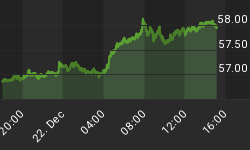Anyone calling gold a bubble is talking through their hat or worse...
Yes, growth in global gold demand is rapid. No, another decade of quintupling prices isn't nailed on. But neither of those facts make gold a "bubble" today.
In fact, anyone calling gold a bubble right now is talking through their hat - at best. Take these jokers, for instance, all holding forth in the last month...
Myth #1. "Gold is a crowded trade"
The finance pages are packed with gold headlines, but actual investment levels remain low. In the early 1980s, private-bank clients were expected to hold 3% of their wealth in gold, many times the ![]() 0.5% allocation seen across the finance industry today. Even in the bullion market itself, three-quarters of the 500-plus analysts and traders attending last autumn's LBMA conference in Berlin said they held as little as nothing ("Between 0% and 10%") of their savings in precious metals. Saturation is a long way off.
0.5% allocation seen across the finance industry today. Even in the bullion market itself, three-quarters of the 500-plus analysts and traders attending last autumn's LBMA conference in Berlin said they held as little as nothing ("Between 0% and 10%") of their savings in precious metals. Saturation is a long way off.
Myth #2. "Gold has madly rushed to $1500 without a correction"
Compared with ![]() undeniable bubbles, gold's recent climb just isn't steep enough. Gold prices rose 70% for Dollar investors in the last 3 years, but US stocks rose 160% in that length of time in the 1920s, and Germany's
undeniable bubbles, gold's recent climb just isn't steep enough. Gold prices rose 70% for Dollar investors in the last 3 years, but US stocks rose 160% in that length of time in the 1920s, and Germany's ![]() Neuer Markt rose over 1600% starting in 1997. London's South Sea Bubble of 1720 rose 9-fold in 5 months! What makes gold remarkable today is the longevity, not speed, of its bull market - now delivering positive, inflation-beating returns to US and UK savers every year since 2001.
Neuer Markt rose over 1600% starting in 1997. London's South Sea Bubble of 1720 rose 9-fold in 5 months! What makes gold remarkable today is the longevity, not speed, of its bull market - now delivering positive, inflation-beating returns to US and UK savers every year since 2001.
Myth #3. "Gold will fall hard when interest rates rise"
Only if interest rates outpace inflation, and what are the chances of that? People turn to gold when cash - its major (and otherwise better) competitor as a store of wealth - loses value. Sub-zero real US rates have already cost cash savers over 3% of their spending power in the last 18 months. Rates currently lag inflation by the widest margin since the summer of 1980. Back then, however, the cost of living was rising at double-digits, and could not be talked away.
Myth #4. "Inflation is set to fall back"
How, exactly? The cost living is hurting earners, savers and seniors alike, but mostly because their incomes aren't growing. On the official data, the Consumer Price Index has risen barely 11% from five years ago, its weakest long-term rise since 1967. Anything lower, and QE3 looks certain, thanks to the Fed's anti-deflation fixation. If US inflation is headed anywhere from here, it's not down.
Myth #5. "Gold's not an investment, because it doesn't pay interest"
A desperate claim which is at least true - true a decade ago at $260, and true evermore unless an investment bank sells you a structured derivative. Gold's lack of income means it has no promises to break, setting it apart from all other asset classes, most notably debt. It's hard to accuse gold buyers of "over-optimism " (![]() Charles Kindleberger's definition of bubble), but this market would only move into "irrational exuberance" (Robert Shiller's phrase) if it kept rising after monetary policy switched from weak to strong.
Charles Kindleberger's definition of bubble), but this market would only move into "irrational exuberance" (Robert Shiller's phrase) if it kept rising after monetary policy switched from weak to strong.
Myth #6. "Gold will burst when the world economy settles down"
You've got to love that "when". But beyond its impact on policy rates, however, economic growth has little to do with gold prices. Gold fell vs. the Dollar during the US recessions of 1980 and 1990, only to triple during the go-go years of 2003-2007. Across the last four decades, in fact, gold shows a negative but statistically insignificant correlation with quarterly US GDP of minus 0.11 year-over-year. Quarterly GDP in China (the world's second-biggest buyers) shows a negligible 0.08 correlation since 2005. Rupee gold prices since 1996 show only a 0.32 correlation with Indian GDP.
People started saying gold was a bubble in early 2008 at $1000, then at $1200 and $1300 in 2009 and 2010, and now at $1500 and above in 2011. Yet still nothing has changed to the core case for gold. If anything, in fact, the fundamental reasons for private savings going to buy gold have grown stronger.
Ultra-loose money is locked in by record peace-time debts and deficits. Central-bank and private-Asian gold buying continue to grow as economic power moves East.
Everything else is just noise - the one excess to which gold investing is prone right now.















